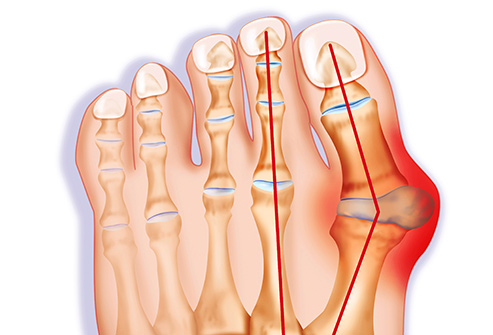Hallux valgus, commonly referred to as bunion, is an enlargement of bone and soft tissues at the base of the big toe. The deformity progressively worsens causing tightening of the tendons, which in turn causes the base of the big toe to angle out resulting in a painful bump.
The most common predisposing cause of a bunion is family history. Also, prolonged wearing of ill-fitting footwear that compresses the toes is a frequent cause in the Australian population. This can include high heels, narrow shoes, shoes that are too small or pointy shoes with a narrow toe box. This explains why bunions are more frequent in women than men. Some conditions, like Rheumatoid arthritis, increase the risk of developing a bunion.

